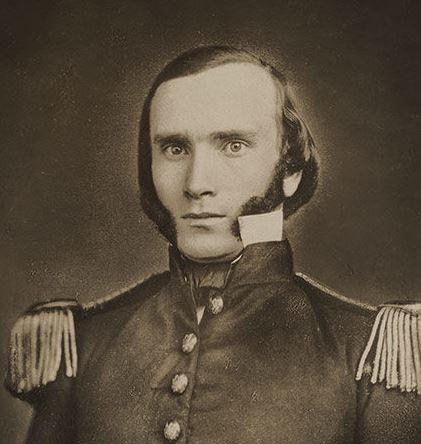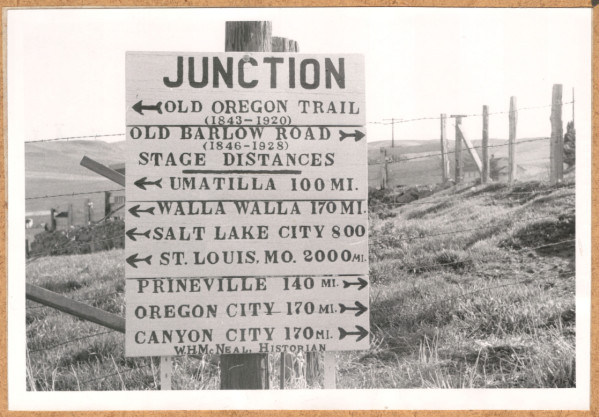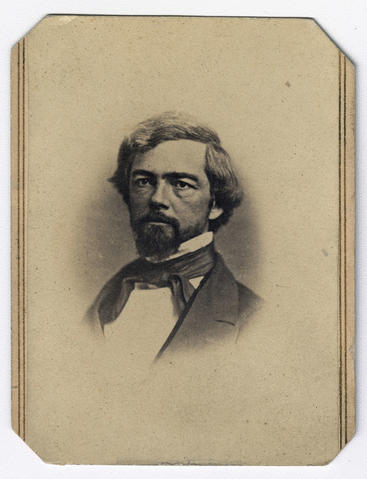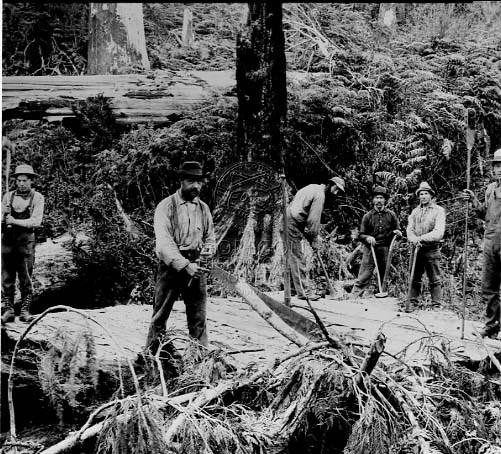On old maps of the Pacific Northwest, John Mullan’s name is affixed to a 625-mile-long military wagon road that connected the heads of navigation on two of the West’s most important rivers, the Missouri and the Columbia, and the first road to link the Pacific Northwest with northern sections of the Midwest. Beginning in July 1859, Lieutenant Mullan of the Army’s Topographical Engineers led a crew of workers, freighters, and engineers east from Walla Walla, Washington Territory, near the Columbia River toward Fort Benton, Dakota Territory, on the Missouri River, completing the first construction in August 1860.
Mullan continued to build and improve the road during 1861 and 1862 to accommodate military convoys and freight wagons, although the U.S. Army only used the so-called Mullan Road once, in 1864, to convey troops and material from Fort Benton to Walla Walla. The road’s significance for the Oregon Country was brief but crucial. During the rushes in the mid-1860s, it was the only wagon route to connect gold mining camps in Idaho and Montana with St. Louis on the lower Missouri River and with Portland on the Columbia River. Lengthy sections of the route are paralleled today by I-15 in Montana and I-90 in Montana, Idaho, and Washington. Other sections in western Montana and northern Idaho were used by the transcontinental route of the Chicago, St. Paul, & Milwaukie Railroad in 1907. A short portion of the original road is still traceable near present-day Alberton, Montana.
John Mullan was born in Norfolk, Virginia, but grew up in Annapolis, Maryland, where he studied classics at St. John’s College, graduating in 1847 at age sixteen. One of eleven children of a career soldier, Mullan pursued his father’s profession and secured admission to West Point in 1848. In 1853, with an engineering degree in hand, Lieutenant Mullan joined Isaac Stevens’s northern transcontinental railroad survey. His facility in engineering and leadership impressed Stevens, who praised his work in 1858 when Mullan sought an additional posting in the Northwest. “Lieut. Mullan was associated with me in the exploration of the Northern Pacific Railroad route,” Stevens wrote, “and his contributions to the geography of our interior reflect the highest credit upon his capacity as an explorer, and . . . . [his] extensive explorations not only have given him an accurate knowledge of the country but of the Indian tribes.”
Mullan’s military service in the West kept him out of the Civil War and potential battlefield advancement in rank. But he was ambitious, and he absorbed the political needs and opportunities in the rapidly changing northern region of the Pacific Northwest, including aspirations to become territorial governor of newly created Idaho Territory in 1863. He resigned from the military in 1863, settled on a farm near Walla Walla, Washington, and invested in an ill-fated stage line that bankrupted him in 1866. He decamped for San Francisco and became a lawyer in 1867. He succeeded brilliantly as a counselor for litigants pursuing federal reimbursements, and in 1878 moved his legal practice to Washington, D.C., where he litigated and lobbied for western state interests for two decades.
In 1853, Mullan married Mary Ann Finlay, granddaughter of Jacques Raphael “Jaco” Finlay, a mixed-ancestry North West Company fur trader who was active in the Pacific Northwest until his death in 1828. She died in childbirth in 1855. Mullan married Rebecca Williamson of Baltimore in 1863; they had a son and two daughters. After ten years of failing health, Mullan died in Washington, D.C., in December 1909. He is buried in St. Mary’s Cemetery in Annapolis.
-
![]()
John Mullan.
Courtesy Georgetown University Library
Related Entries
-
![Barlow Road]()
Barlow Road
The Barlow Road is a historic wagon road that created a new route on th…
-
![Isaac Ingalls Stevens (1818-1862)]()
Isaac Ingalls Stevens (1818-1862)
Isaac Stevens strode through the Northwest's formative years (1853-1861…
-
![Salem - Astoria Military Road]()
Salem - Astoria Military Road
As white settlement grew in the lower Willamette Valley during the mid-…
-
Santiam Wagon Road
The Santiam Wagon Road was a vital commercial link connecting the Willa…
Related Historical Records
Map This on the Oregon History WayFinder
The Oregon History Wayfinder is an interactive map that identifies significant places, people, and events in Oregon history.
Further Reading
Petersen, Keith C. John Mullan: The Tumultuous Life of a Western Road Builder. Pullman: WSU Press, 2014.
Winther, Oscar Osborn. “Early Commercial Importance of the Mullan Road.” Oregon Historical Quarterly (March 1945): 22-35.
Axline, Jon. “Mullan’s Point of Rocks: Preserving Transportation History.” Montana, the Magazine of History (Winter 1999): 90-91.





